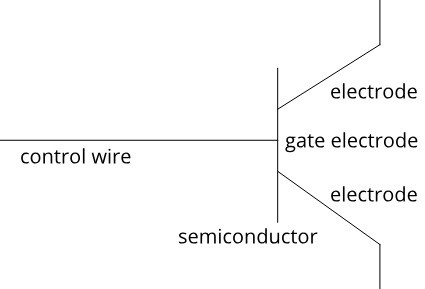Part 2 - Transistors
For a complete table of contents of all the lessons please click below as it will give you a brief of each lesson in addition to the topics it will cover. https://github.com/mytechnotalent/Reverse-Engineering-Tutorial
To understand modern computing we have to go down to the most basic level. Our journey starts with the transistor.
A transistor is nothing more than a complex relay as it is a switch that can be open or closed by applying an electrical charge. This charge is made possible by the use of a control wire. The control wire is attached to a material that can conduct or resist electricity to which on the other end there are two electrodes attached to such a material. This is the concept of a semiconductor. The control wire attaches to a gate electrode where if you change the electrical charge of the gate the conductivity of the semiconductor material can be manipulated. Think of a simple kitchen faucet to which you can turn water on or off. The concept is quite similar.
Quite simply the flow of electricity represents a 1 and the lack of such an electricity flow represents a 0. This is a boolean on or off architecture to which we need to take a deeper dive into the binary number system at a later time.
I deliberately try to keep these lessons short so that it draws the largest audience to take just a few minutes each week to properly grasp some complicated architectures.
Next week we will touch on logic gates and discuss how the combination of such gates make up the core of how the processor works. We will only discuss them on a high level as it would be an entire additional course in electrical engineering to really get into how the processor is made to which we will stick to the basics and spend more of our time on how to program the chip.
After some basics about the processor and an introduction to the binary and hexadecimal number systems we will build our very own bootable operating system.
